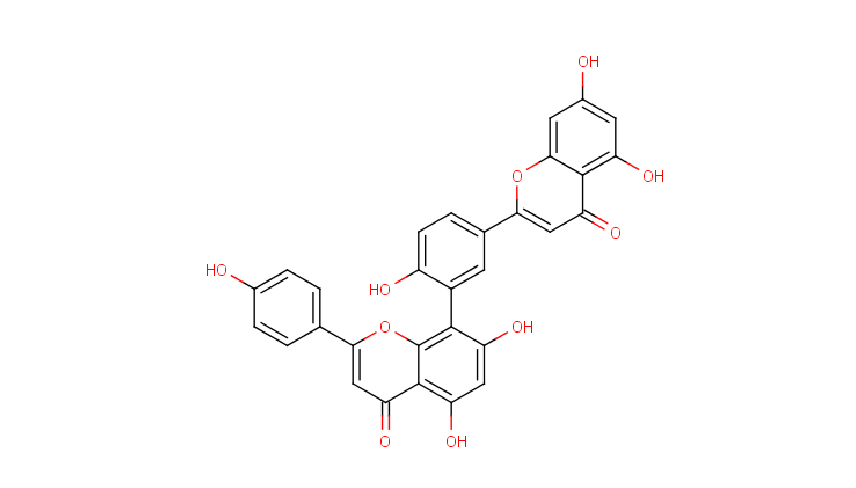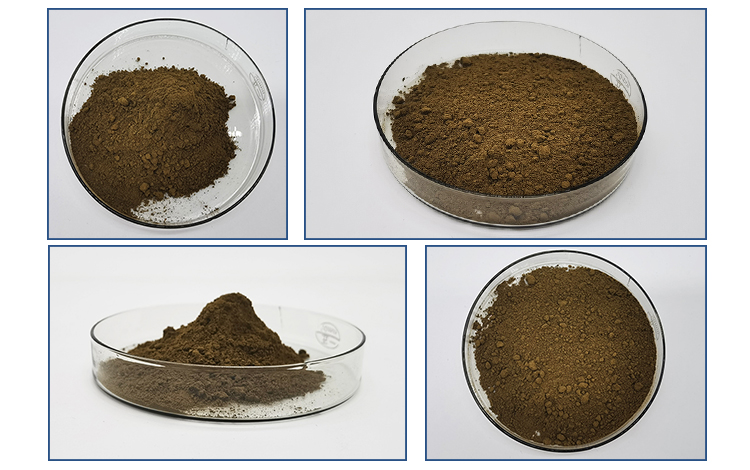Amentoflavone is a naturally occurring biflavonoid compound found in a variety of plants, including Ginkgo biloba, Selaginella tamariscina, and Hypericum perforatum (St. John’s Wort). Here are some details about its chemical structure and physical properties:
Chemical Structure of Amentoflavone:
- Molecular Formula: C30H18O10
- Molecular Weight: Approximately 538.46 g/mol

Amentoflavone has a unique structure consisting of two flavone units linked by a central bridge. The specific structure can be described as follows:
- It consists of two flavone units (4′-hydroxyflavone) linked together by a central C-C bond.
- The flavone units are connected at position 3 of one unit to position 8 of the other, forming a C-C linkage between the two flavone moieties.
- The structure includes multiple hydroxyl groups (OH) and carbonyl groups (C=O), which contribute to its biological activity and solubility properties.
Physical Properties of Amentoflavone:
- Appearance: Amentoflavone typically appears as a yellow crystalline solid.
- Melting Point: The melting point of amentoflavone is reported to be around 210-212°C.
- Solubility: It is sparingly soluble in water but soluble in organic solvents such as ethanol, methanol, and dimethyl sulfoxide (DMSO).

Biological Activities of Amentoflavone:
Amentoflavone is known for its diverse biological activities, including:
- Antioxidant: It exhibits potent antioxidant activity, which contributes to its neuroprotective and anti-inflammatory effects.
- Neuroprotective: Amentoflavone has shown promise in protecting neurons from damage and promoting nerve cell health.
- Anti-inflammatory: It possesses anti-inflammatory properties, which are beneficial in various conditions involving inflammation.
- Antiviral: There is also evidence suggesting antiviral activity against certain viruses.
These properties make amentoflavone an interesting compound for further research, particularly in the fields of medicine and pharmacology. Its ability to modulate various biological pathways has potential implications for therapeutic applications in diseases involving oxidative stress, inflammation, and neurological disorders.
